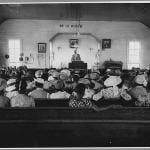Flipping through the press notes for The Da Vinci Code tonight, I spotted this, on pages 21 and 22 — but if you haven’t got a copy, don’t worry, it’s also available at RottenTomatoes.com:
The Priory of Sion
In his novel, The Da Vinci Code, author Dan Brown contends that the Priory of Sion is a real organization founded in 1099, and that parchments housed at the Bibliothèque Nationale in Paris reveal that its membership included many leading figures of literature, art and science. However, the documents in the Bibliothèque Nationale have been revealed to be modern forgeries placed there by Pierre Plantard, who admitted to having “founded” the Priory with three friends in 1956, either as a lark or part of a con. He was elected the Grand Master of the Priory in 1981.
The phoney documents and manuscripts, which have become known as the “Dossiers Secrets,” claim that the secret organization was founded in 1099 by Godefroy de Bouillon, who led the first army to depart for Jerusalem during the First Crusade, and was the original ruler of the recaptured Holy Land. The Priory is also given credit for the creation of the Knights Templar, which supposedly then split with them some 100 years later.
Got that? The movie’s press kit explicitly says Dan Brown’s novel was wrong, wrong, wrong when it claimed on its first page:
FACT:
The Priory of Sion — a European secret society formed in 1099 — is a real organization. In 1975 Paris’s Bibliotheque Nationale discovered parchments known as Les Dossiers Secrets, identifying numerous numbers of the Priory of Sion, including Sir Isaac Newton, Botticelli, Victor Hugo and Leonardo da Vinci. . . .
All descriptions of artwork, architecture, documents and secret rituals in this novel are accurate.
The press kit would also seem to contradict the filmmakers on one or two other points. Director Ron Howard recently told the Los Angeles Times, “It’s not theology. It’s not history.” And yet, the press kit says it was precisely the theological and historical issues that interested Howard and company. The historical:
At the same time, Imagine Entertainment co-chairman Brian Grazer and his partner, director and producer Ron Howard, were also keen on adapting the book for the screen. Grazer was especially intrigued by some of its underlying issues: “Not only did I like The Da Vinci Code as an entertaining and exciting read, but there were certain profound things about the story that caught my attention. There were questions of history versus the creation of history — questions I found exciting and compelling.”
And the theological:
For Howard, the role of Sophie Neveu was a crucial one in telling the story of The Da Vinci Code. “One of the themes that resonated with me when I read the novel, and one of the things I really wanted to make sure was front and center in the movie, was the idea of the sacred feminine,” says Howard. “I have three daughters, and have been married for 30 years to a powerful woman, so this was very important to me. Sophie’s emotional journey in The Da Vinci Code is really exciting. Having such a strong female character at the center, watching her come to understand who she really is as this mystery of her life unfolds, adds a great deal of wonderful suspense to the thriller.”
Granted, Howard explains the “sacred feminine” more in dramatic terms than theological terms, but still. “Front and center”.











